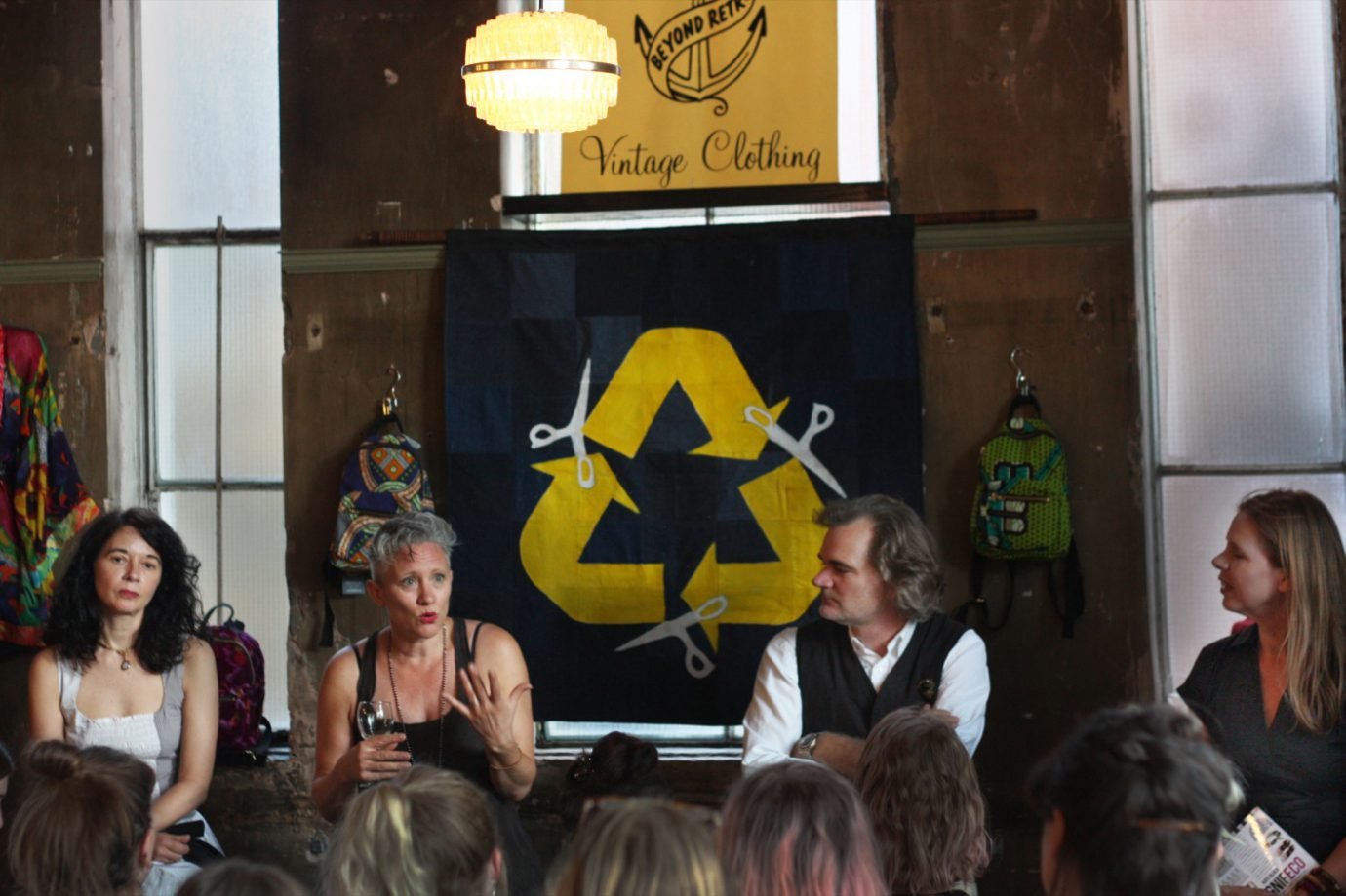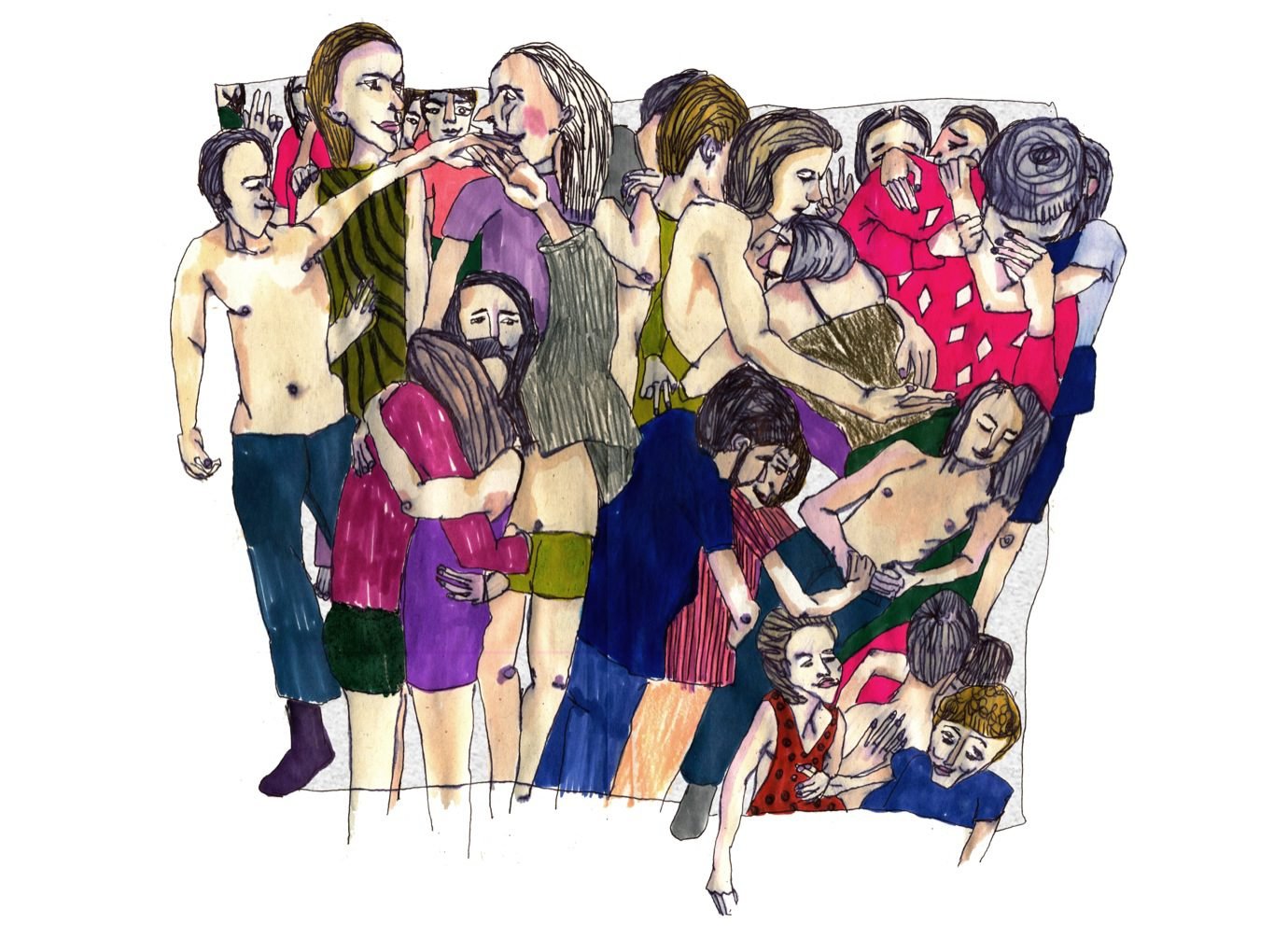They say it takes about 10.000 hours to master a skill. 3 hour per day, every day, for 9 years, and you’ll get there. Here’s a case study. Christel Bibi Blangsted enrolled at the Danish Academy of Design when she was 17, worked closely with a tailor in Copenhagen, then at the high-end Christian Dam gallery. She enrolled on Central Saint Martins’ BA Womenswear, during which she worked at Ann Demeulemeester, followed by a small art stint in Denmark, which was interrupted by an invitation to participate in a Sri Lanka-based craft design project. Fast-forward floods, leeches and swimming to the embassy with a passport between her teeth, she returned to London working at Mary Katrantzou, and landed a spot on the MA under Louise Wilson, graduating in 2013. Without much time to catch a breath, she worked in various industry roles before deciding to start her own brand in 2017 – consulting for Alyx and Wunderkind in the meanwhile. She presumably arrived at the 10,000 hour mark when she decided to dedicate herself to making one thing really well: fine shirting for women to rival the standard men’s counterpart has attained through the years.
Sustainability is a mindset
Bibi Blangsted on why she makes shirts that are made to last and don't cost the earth.
Bibi Blangsted on why she makes shirts that are made to last and don’t cost the earth.
You’ve told me that your started your company because it was quite hard to find a good classic white shirt.
Yes, hard to believe isn’t it? I guess it has been overlooked for some time. A few larger companies are now paying more attention to the heritage and the whole allegory of the white shirt, but I am not sure if they really try to own it as a quality product. The white shirt, with all its elements of fusings, stitchings, prestitchings, corners and turns and tensions, it is a complex garment to make in terms of the different elements that go into it. Maybe that’s why many brands don’t really take it on in depth.
What do you think is the difference between men’s and women’s shirting?
From what I’ve seen and heard from working in the industry all these years, is that a shirt for women is treated differently, all the way down to the choice of poplin. The whole ethos was that women shop differently than men and therefore the shirts were designed to reflect the different needs and interests. When you look at the choice of poplin, men’s shirting is based on poplins from a couple of well-established Italian or Swiss mills. Women’s shirts were made to reflect an occasion, and fabrics are often chosen to reflect that rather than for their quality as poplins. For example, elastic is often used in the fibre mix, which shortens the lifespan. Less attention is given to fusings and other trims. In general they were two different parallels with values coming from different origins.
How are your shirts different from what’s out there right now?
They are made using techniques that will make the shirt last a long time, and a raw material which can be washed over and over and still look great. They are made with a fit which is versatile and still in the classic realm. To make all of this happen takes time. There are no shortcuts. Also women just have a different body form – we don’t have the standard template that men can get away with. So yes, a lot of women borrow a shirt from men, but the fit is just a little off. That is the challenge.
What is sustainability to you?
I tend to rant about sustainability – the whole concept is just wildly misunderstood. In the 17 years that I have been working in the industry, while being very much aware of its necessity, there haven’t been any important innovations that are applicable all the way. There’s some closed-loop fibre systems that are good, but nothing really matters if the consumer doesn’t take care of the garment. You can buy any well-made, sustainably produced garment and wear it once and decide you don’t like how it feels—or destroy it in the washing machine by not caring for it… Most people don’t keep a garment for long because it doesn’t make them feel good, it doesn’t feel right. Then they sell it online and buy something else, and the cycle repeats itself. So that increases consumption and energy waste in relation to making new products. At the end of the day, the only true sustainable option is to make a product which has a long lifespan and which keeps relevance. To give one example, I have a pair of vintage Helmut Lang raw silk jeans which are incredible. Yes, silk harvesting kills the larvae – techniques are being developed in this area – but they have lasted me over 10 years of intense wear, and they show no signs of wearing down on knees or where you would expect them to get worn down. That is sustainable.
So how is Bibi Blangsted sustainable?
I decided that you had to change people’s emotional connection to the garment in order to get them to take care of it, like they would any other investment. So I came up with a concept of using jewellery which is known for being inheritable, and connecting that with the design process.
How does that work in practise?
Some of the designs are cut in ways where the jewellery is interchangeable throughout the seasonal collections. I keep the majority of the jewellery functional and by doing this you can rewire people’s connections to the garment. Another area of sustainability is the raw materials; I use a mixture of organic recycled and virgin fibres that are durable. It is a complex process and the solution seems to be finding the right balance. The lifespan of the majority of organic cottons is not very long compared to conventional ones. This is because the organic fibres are shorter, and therefore ‘unravel’ faster. Organic cotton has been hyped as a holy grail, but cotton in itself has some negative aspects. It needs a lot of land and water to grow, so unless you choose your mills wisely, you could simply just be causing more harm to the environment.
What would you advise to any young designers or students who want to make a high quality product that is inherently sustainable?
I would say research where you get your fabrics from. Work with mills which take pride in their work. It is very difficult to research, and more mills claim that they are organically certified than is technically possible. To put things into perspective, one of my mills works with a large Paris based fashion house that ordered 60.000 meters of a specific organic poplin, the same that I use myself. The amount of land needed to produce that can only be found in China, and as cotton is not a fast-growing plant, it produces only one annual crop. So the land mass needed is vast. For just one brand.
If we compare the amount of so called certified organic cotton to the amount of suitable land in the world, the numbers don’t match up. I don’t mean to give organic cotton a bad reputation, I love cotton and it can be incredibly durable and strong, but you just need to evaluate what you are making and what material that would be optimal for that use. The good thing is that there are other fibres than cotton which are sustainable, like Tencel, Lynocell, Triacetate, I think they all have closed looped systems. There are textiles now which are biodegradable and based on biofuel, as well as degradable ones which disappears after a few years. I’m exploring all these new technologies for my new collection which will be entirely sustainable and still luxury. That hasn’t been possible until now… Also denim now is often closed looped and uses very little water, but misinformation has given denim a bad rep – although it’s well deserved if not produced sustainably, as it can consume easily 5000 litres of water for the make of one pair of jeans. People are just severely misinformed. And it is a jungle of information. So you have to see what works in the long run. And longevity always comes out on the top.

























